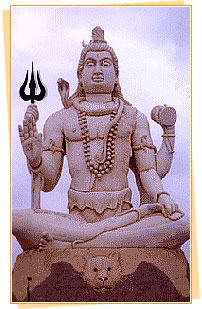
LORD SHIVA
Kashi Vishwanath Temple

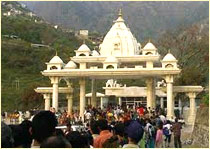
The oldest living city in the world, Varanasi is the ultimate destination of all Hindu pilgrims searching for moksha from the cycle of birth and re-birth. The word 'Kashi' originated from the word 'Kas' which means to shine. Kashi is mentioned repeatedly in the scriptures - the Brahmanas, Upanishads and the Puranas. It is the oldest center of learning and the University here is still widely respected for its Sanskrit, Philosophy, and Arts faculties. Hyuen Tsang, the Chinese traveler visited Varanasi in the 7th century.
Stepped in tradition and mythological legacy, Kashi is the 'original ground' created by Lord Shiva and Parvati. The Kashi Vishwanath Temple is dedicated to Lord Shiva. The temple was destroyed in the various invasions and was rebuilt in 1776 by Rani Ahilyabai of Indore. Hundreds and thousands of pilgrims flock to Varanasi to offer homage and wash away their sins.
Vishweshwara jyotirlinga has a very special and unique significance in the spiritual history of India. Deeply and intimately implanted in the Hindu mind, the Kashi Vishwanath Temple has been a living embodiment of our timeless cultural traditions and highest spiritual values. The Temple has been visited by all great saints- Adi Shankaracharya, Ramkrishna Paramhansa, Swami Vivekanand, Goswami Tulsidas, Maharshi Dayanand Saraswati, Gurunanak and several other spiritual personalities.



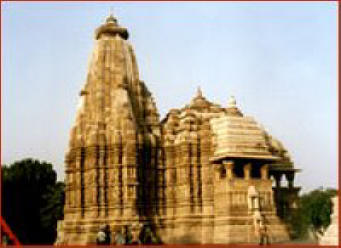




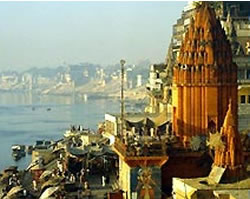

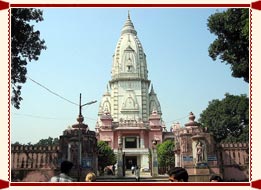





Vishwanath Temple in Varanasi
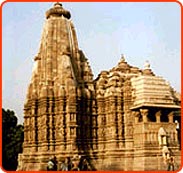 Vishwanath Temple is located amidst the crowded lanes in the holy city of Varanasi also known as Kashi and Benares. The Vishwanath Temple enshrines one of the twelve Jyotirlingams of Lord Shiva and is one of the most revered pilgrimage sites for Hindus. It is believed that Varanasi is the point at which the first Jyotirlinga, the fiery pillar of light by which Shiva manifested his supremacy over other gods, broke through the earth’s crust and flared towards the heavens. More than the Ghats and even the Ganga, the Shivalinga installed in the temple remain the devotional focus of Varanasi. Millions of pilgrims converge here to perform an abhishekam to the sacred Jyotirlingam with sacred water of river Ganga.
Vishwanath Temple is located amidst the crowded lanes in the holy city of Varanasi also known as Kashi and Benares. The Vishwanath Temple enshrines one of the twelve Jyotirlingams of Lord Shiva and is one of the most revered pilgrimage sites for Hindus. It is believed that Varanasi is the point at which the first Jyotirlinga, the fiery pillar of light by which Shiva manifested his supremacy over other gods, broke through the earth’s crust and flared towards the heavens. More than the Ghats and even the Ganga, the Shivalinga installed in the temple remain the devotional focus of Varanasi. Millions of pilgrims converge here to perform an abhishekam to the sacred Jyotirlingam with sacred water of river Ganga.Significance of Vishwanath Temple
Also famous by the name of Shiv Vishwanath Kashi, Shri Vishweshwar Temple is said to be dear to Lord Shiva. Hindus believe that those who come and die here attain liberation. It is said that Lord Shiva gives the Tarak Mantra to the ones who are going to die here. Some also believe that the Lord resides here and is the giver of liberation and happiness. The one who prays and worships Vishweshwar with devotion attains all his desires and one who incessantly recites his name attains all siddhis and finally gets liberated.
Structure of Shri Vishwanath Jyotirlinga Temple
Shri Vishwanatha Temple is situated amidst the crowded lanes of Varanasi on the banks of the rive Ganga. The temple can be approached from a lane called Vishwanatha lane. Beside its religious significance, the temple is also an architectural marvel. The magnificent edifice offers a breathtaking view to the onlooker. The Kashi Vishwanath Temple is also popularly known as the 'Golden Temple' due the gold plating done on its 15.5-meter high spire. One tonne of gold donated by Maharaja Ranjit Singh has been used in the gold plating of the spire.
Inside the courtyard is the temple of Vishwanatha surrounded by many subsidiary shrines. A well, called Jnana Vapi i.e. ‘wisdom well’ located to the north of the main temple. The Vishwanatha temple consists of a mandapa and a sanctum. Inside the sanctum a linga is set into the center of the floor in a square silver altar. The Linga is of black stone. Though the interior of the temple is not large and elaborate it presents the peaceful atmosphere ideal for worship.
History of Vishwanath Temple
The famous Vishwanath Temple has been rebuilt several times. The original was supposed to have been built in 1490. However, the original Jyotirlinga of Kashi Vishwanath is a not available. The old temple was destroyed as a result of the Mughal invasion and Aurangazeb built a mosque in place of it. The ancient idol of Vishweshwar is situated in Jnana-Vapi. Even today the western wall of the mosque show the remnants of a temple which had very intricate and fine artwork on it. Both the Kashi Vishwanath and the Gyanvapi Mosque are adjacent to each other
The latest structure standing here dates back to the 18th century. It is said that once Lord Shiva came in the dream of Rani Ahilya Bai Holkar of Indore. She, being a devotee of Lord Shiva, got the current temple built in 1777 at a distance from the original one.
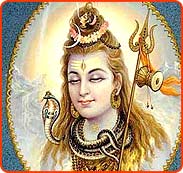
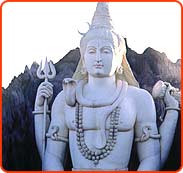
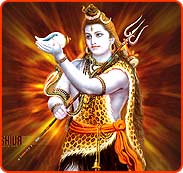
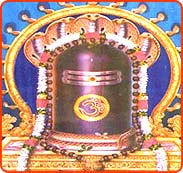
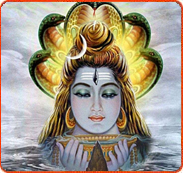
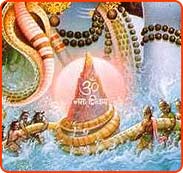
The Legend of Ganga
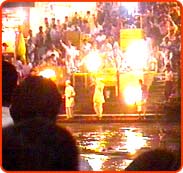 The legend of Ganga’s descent from the heavens into the earth has been narrated in the Hindu mythological epic of Ramayana. The legend explains the popular custom of giving bath to Shiv Linga on Shivaratri festival.
The legend of Ganga’s descent from the heavens into the earth has been narrated in the Hindu mythological epic of Ramayana. The legend explains the popular custom of giving bath to Shiv Linga on Shivaratri festival.The Legend
Once King Sagar - the ruler of Ayodhya and an ancestor of Lord Rama successfully performed the Ashwamedha Yagya for 99 times. Each time, he sent the horse around the earth it returned to the kingdom unchallenged. However, Indra - the King of God’s became jealous of King Sagar’s success. So when King Sagar performed the sacrifice of the 100th time, Indra kidnapped and hid the Yagya horse in the hermitage of Kapila Muni
In search of the horse, sixty thousand princes from Ayodhya reached Kapil Muni’s hermitage. They mistook the sage to be the abductor and attacked him. An enraged Kapila Muni burnt the 60,000 princes to ashes. On hearing about the plight of his father and uncles, King Bhagiratha - one of the grandchildren of King Sagar requested Kapila Muni to grant a solution to the problem. Kapila Muni advised that the waters of the river Ganga would miraculously bring back the dead princes to life.
King Bhagirath left his kingdom and began to mediate for the salvation of the souls of his ancestors. It is said that Bhagirath observed a penance to Brahma for a thousand years, requesting Ganga to come down to earth from heaven and wash over his ancestor's ashes to release them from a curse and allow them to go to heaven. Pleased with the devotion, Brahma granted Bhagirath’s wish but told him to pray to Lord Shiva, as he alone could sustain the weight of her descent.
Accordingly, Lord Shiva held out his thick matted hair to catch the river as she descended. The meandering through Shiva’s lock softened Ganga’s journey to the earth and the holy waters of river Ganga thus washed away the ashes of Bhagirath’s ancestors. A modified version of the legend says, what reached the earth were just sprinkles from Lord Shiva’s hair. The Ganga, thus, became an attribute of Shiva. This manifestation of Shiva is known as Gangadhara.
The legend is re-enacted by devotees of Lord Shiva as they give a bath to the linga during worship. And for this reason, many devotees prefer to take a dip in the holy water of river Ganga on a Shivaratri day.